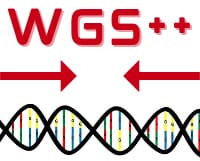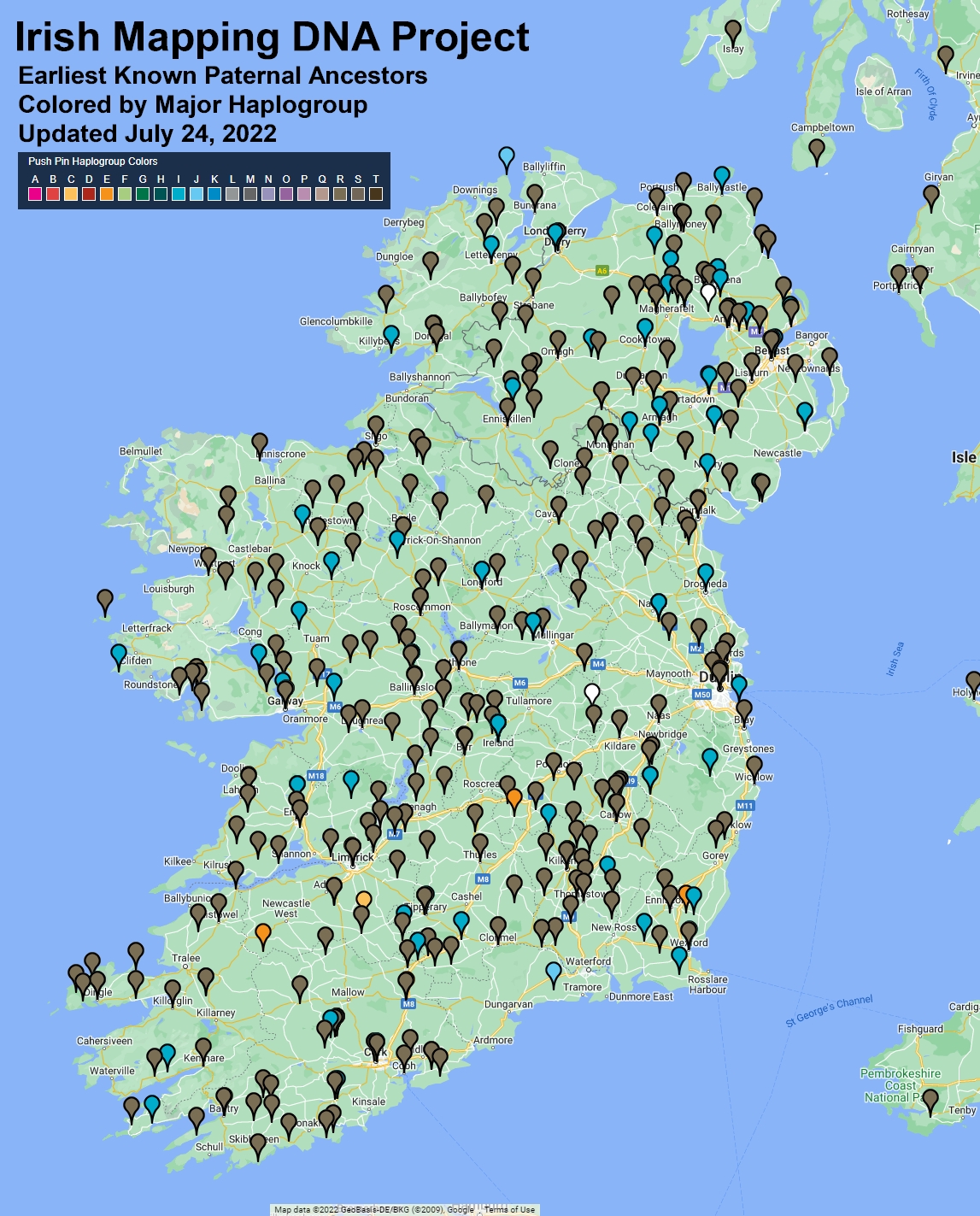The Irish Mapping DNA Project
The Irish Mapping DNA Project is intended to support research on geographic origins and patterns of surnames and Y-DNA originating in Ireland. The goal is that by comparing precise latitude and longitude origins of persons with similar Y-DNA signatures, their genetic homeland in the era of surname formation can be identified.
Although surnames have generally been passed patrilineally in Ireland, there are exceptions and so matches to surnames other than your own could mean that one branch adopted a different name based on a strong patriarch who was well known in his era.
In general, precise identification of geographic origin depends on two important factors:
- Having sufficient resolution in the DNA tests to indicate relatedness in the last 300-500 years using a high-resolution terminal SNP from a Big Y-700 or equivalent test.
- If you've already gotten your Y-DNA results, you can enter your terminal Y-DNA SNP to see your personal pedigree using the DNA Marker Pedigree Tool. By high resolution, we are talking about something at tree level 40 or higher on this tool.
- If you have not ordered a YSeq WGS or Big Y-700 test ,
- Here is a presentation explaining some of the potential benefits: Why Get the Big Y
-
YSeq WGS++
The most comprehensive DNA test package for genetic genealogy (in our opinion)
- For broader descriptions of Y-DNA, haplogroups, and terminal SNPs, see: Wikipedia
- Another description for terminal SNP is here: DNA Explained - Terminal SNP
- Having matches whose geographic origin are known with a degree of precision. Ideally this would mean finding and testing persons in Ireland with a long geographical continuity such as traditional farmers. Failing that, persons with a good paper genealogy trail down to the parish and townland level may provide geographical pointers.
Genetic Homeland Mapping Tool
Comparing map plots of surname records of persons with genetic genealogy matches with tools like the Genetic Homeland Mapping tool can show patterns that are not easily recognized in traditional genealogy records.
So if you are searching for WHERE in Ireland your paternal ancestors came from, you've come to the right project. Take a look at your Y-STR matches and compare what is known about their geographic origins.
Links for More Information
- Introduction to GeneticHomeland.com
- Join the Irish Mapping DNA Project
- Y-DNA Results for Irish Mapping DNA Project



